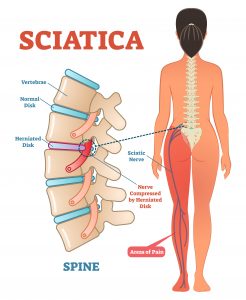Cauda Equina Syndrome
The cauda equina (meaning ‘horse tail’, due to how is looks) is a collection of lumbo-sacral nerve roots in the area at the bottom of the spine. There are several reasons why this area could become compromised; these include slipped discs (most commonly), infections, birth defects, significant trauma (such as road traffic accidents, gunshots and heavy falls), neurofibromas and spinal cord tumours.
A lesion affecting this region will give neurological symptoms, such as weakness, numbness & pins and needles, inability to control bowel and bladder movements and pain.
Don’t worry
Thankfully cauda equina syndrome is rare, but it is significant if present. The main differentiating symptoms between this and non-emergency back pain is the unreliability of controlling bowel and bladder movements. If this does sound like something similar to your symptoms, it needs to be considered a medical emergency and should be treated within 48 hours of the initial onset of symptoms.
Long-term neurological damage could ensue if not treated promptly.
Toolkit to help identify cauda equina syndrome:
- Loss of feeling/pins and needles between your inner thighs or genitalia
- Numbness in and around the back passage of your buttocks
- Altered feeling when using toilet paper to wipe yourself
- Increased difficulty when you try to urinate
- Increasing difficulty when you try to stop the flow of urine
- Loss of sensation when you pass urine
- Leaking urine or the recent need to use absorption pads
- Not knowing when your bladder is full or empty
- Inability to stop a bowel movement or leaking
- Loss of sensation when you make a bowel movement
- Change the inability to achieve an erection or ejaculate
- Loss of sensation in genitalia during sexual intercourse (1)
If you have any questions or are worried that you may have cauda equina syndrome, please consult a medical professional.
Ed Madeley M.ost,
info@movementandwellbeingclinic.co.uk
0161 209 3980
References
1) S. E. Greenhalgh, Carole Truman, +1 author James Selfe 2016 Development of a toolkit for early identification of cauda equina syndromePublished in Primary health care research
